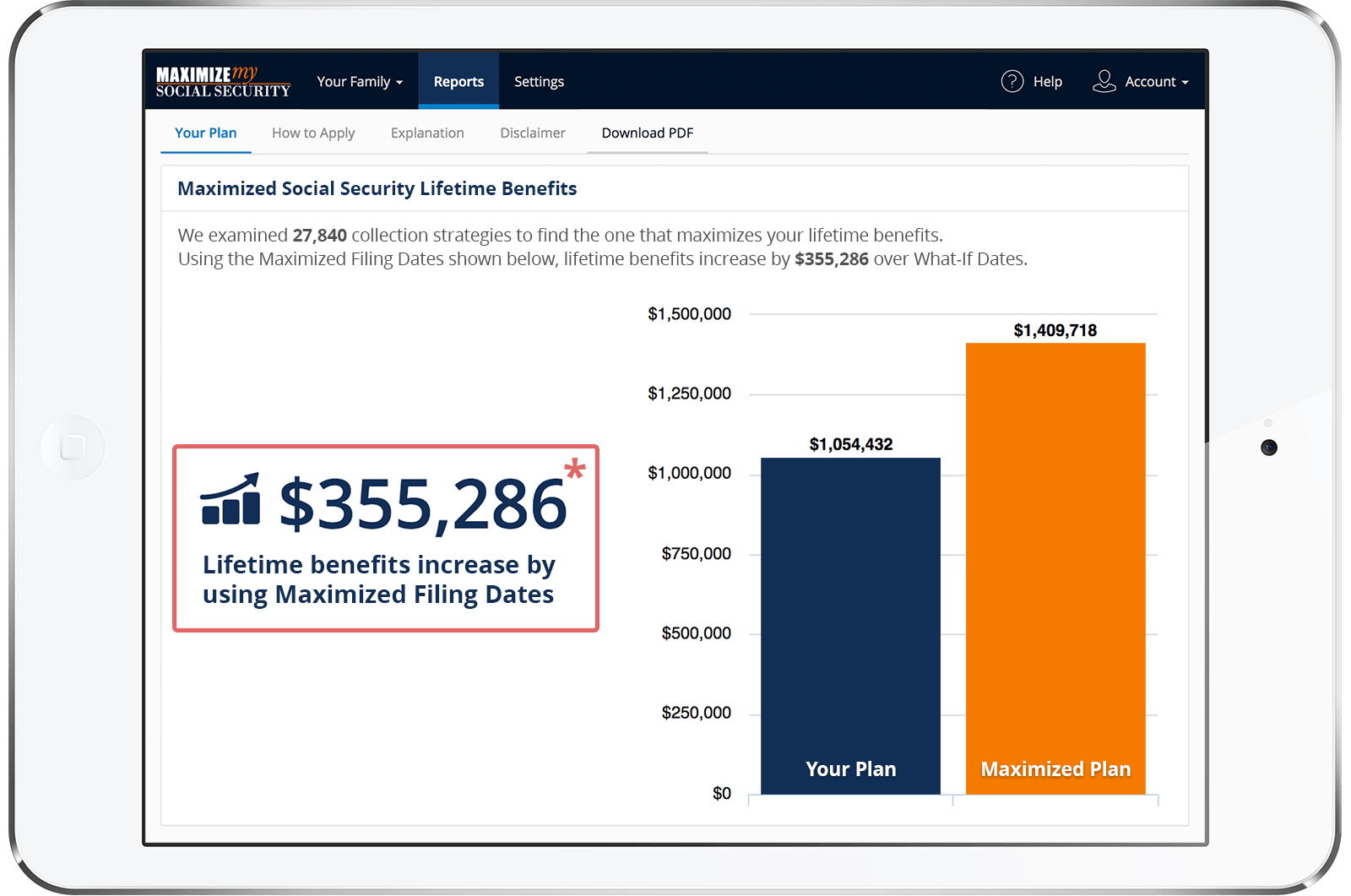I am a subscriber to your software, and I am trying to understand how the combined family maximum impacts the results. My PIA is $3011, and my wife's is $1097. We have two adult disabled sons (disabled at birth). My wife (age 66) started to collect her retirement benefit when she turned 66. I am planning to begin my retirement benefit at age 70. As I understand it, when I begin the benefit, my wife and two disabled sons will be each be eligible for 50% of my PIA. However, when I add up my wife's portion (1505-1097=408 ) plus my sons portions (1505 each) plus my PIA (408+1505+1505 +3011 = 6429) it is more than the family maximum calculated from my PIA (5269) . Will Social Security add the family maximums from my record and the family maximum from my wife's record to determine the combined family maximum? Or is our combined family maximum just the larger of the two?
Thank you,
Dave
Hi Dave,
I answer questions submitted to this forum, but I don't have access to our software customers' data. You may want to resubmit your question using an online contact form in the software's help section in order to receive a personalized answer from one of our experts with access to your customer data.
I can tell you that if & when both you and your wife are drawing your Social Security retirement benefits, and if at least one child of yours is entitled to benefits on both of your records, then your wife's family maximum benefit (FMB) amount can be added to your FMB in order to potentially allow more benefits to be paid to your family. However, there is a statutory combined FMB limit, which for FMBs first combined in 2021 is $5920.20.
I'll give you an example to illustrate how the combined FMB works. Let's say Bob and his wife Jan are both drawing Social Security retirement benefits. Bob's primary insurance amount (PIA) is $3000, and Jan's PIA is $1000. Bob & Jan have 2 children who qualify for benefits on both of their records, so the FMBs on Bob & Jan's accounts can be combined. The combined amount of Bob & Jan's individual FMBs would exceed the statutory limit of $5920.20, so the applicable combined FMB for this family would be $5920.20. After subtracting Bob's PIA, that would leave up to $2920.20 that would be paid to auxiliaries (i.e. children & spouse) eligible for benefits on his account.
Before considering the FMB, the benefit rates payable to Bob & Jan's children would be $1500 each, or 50% of Bob's PIA. Jan would be eligible for an excess spousal benefit of $500, which is calculated by subtracting her PIA from 50% of Bob's PIA. But, in order to calculate the amount that can be paid to each auxiliary while staying within the FMB, Social Security would first divide $2920.20 by 3 to get each auxiliary's share of the available FMB (https://secure.ssa.gov/apps10/poms.nsf/lnx/0300615768#d). In this case, each auxiliary's share would thus be $973.40 (i.e. $2920.20/3).
In Jan's case, her share of the FMB would amount to less than her PIA, so Jan could not be paid any auxiliary benefits from Bob's record. Thus, Jan would only be paid her own benefits. However, since Jan can't be paid excess spousal benefits due to the FMB, her share of the FMB can be redistributed to the 2 children. That would mean each child could be paid half of the $2920.20 available, or $1460.10 each. Actually, though, Social Security would round each child's benefit rate down even dollars, or $1460 each.
Best, Jerry
